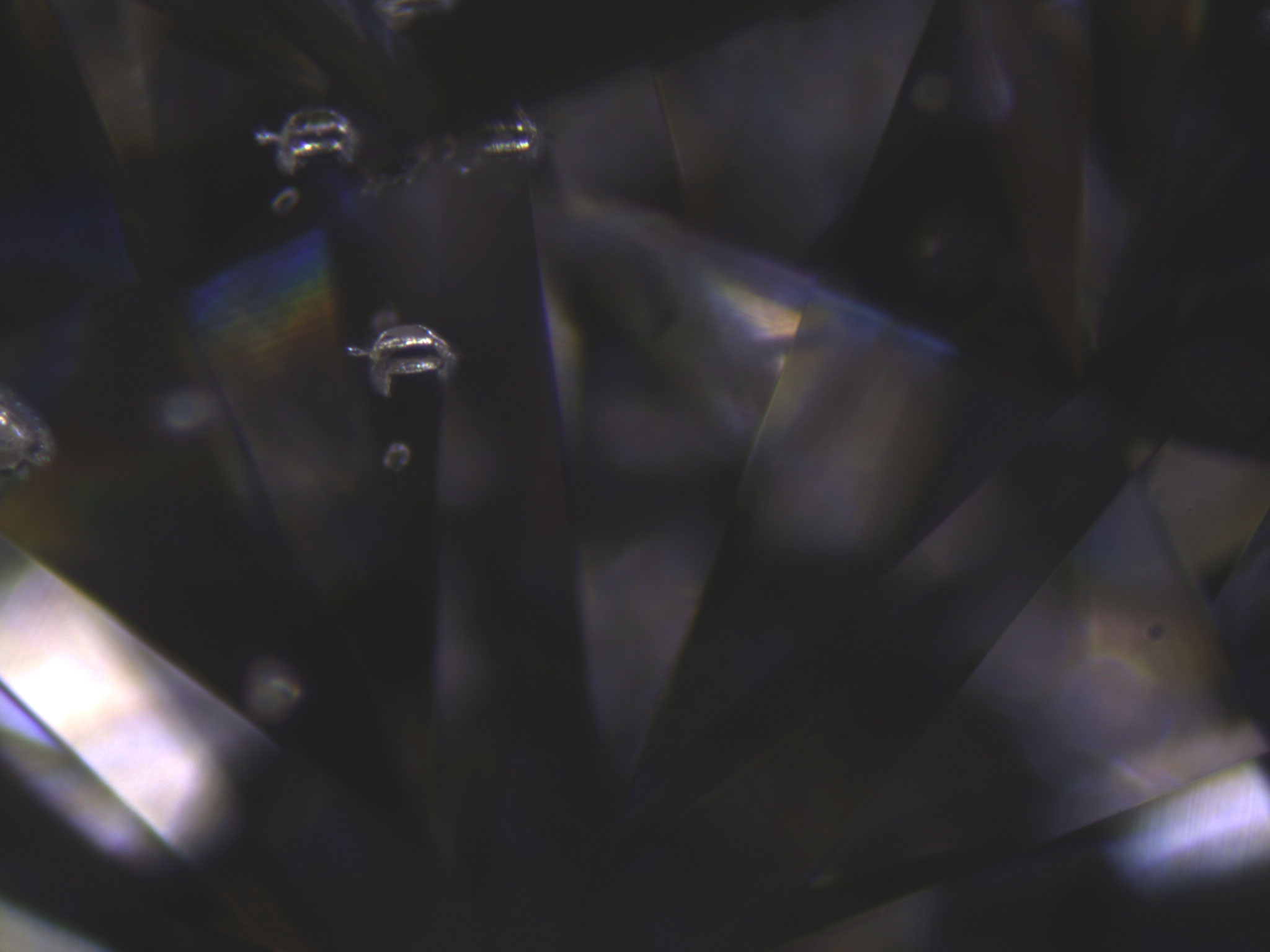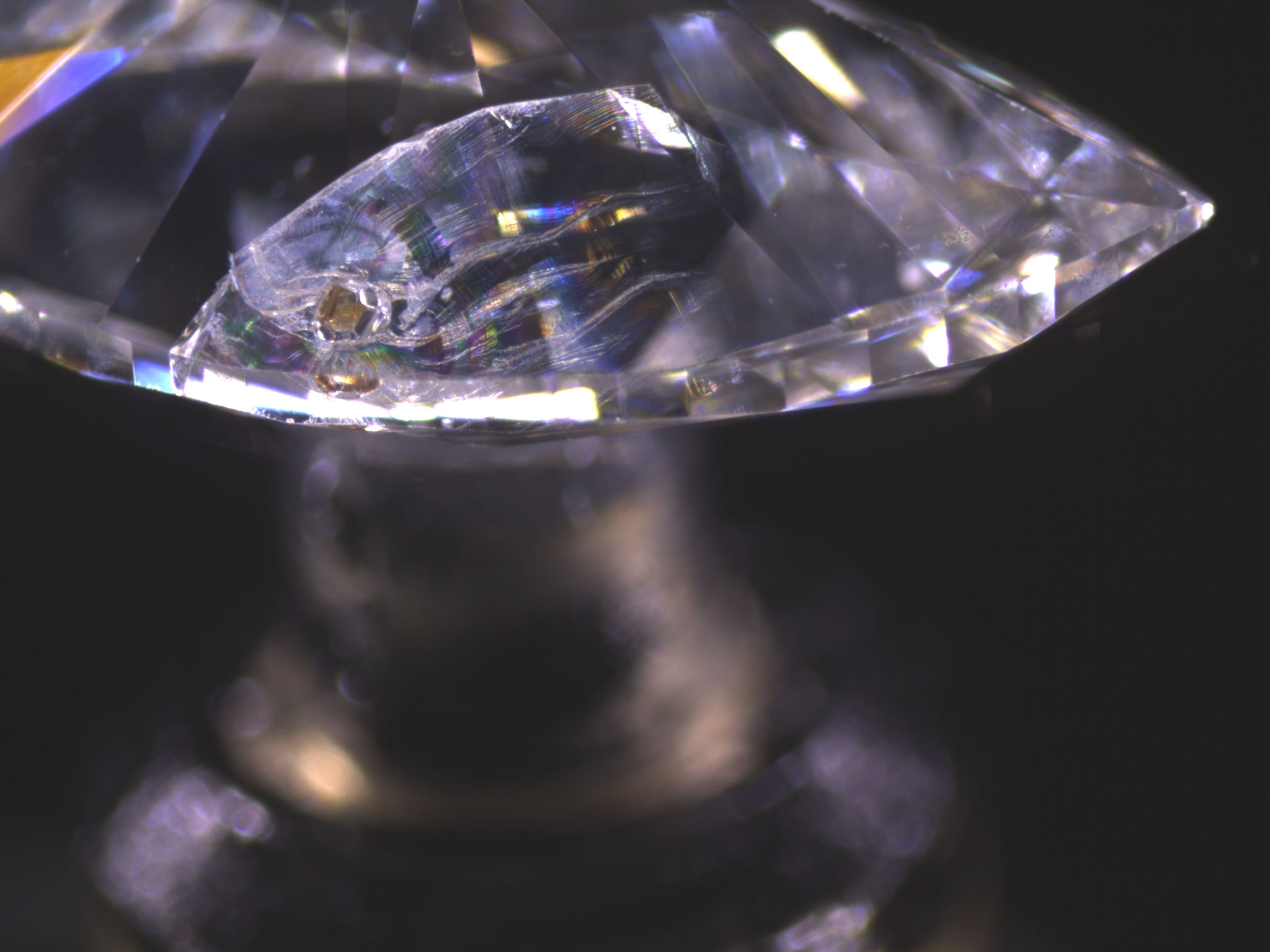The gemologists at AGS Laboratories came across some more clarity rarities to share. If you missed the first two installments of this series, be sure to read Out of the Vault: Clarity Rarities and Out of the Vault: More Clarity Rarities.
This first fun finding was taken at 50x magnification of a crystal shaped like a turtle, and the “turtle’s” reflection. Can you see it? (Look closely, you’ll see the body, head, and arm).

This next image was taken at 20x magnification and exhibits iridescence in a feather. Some of our gemologists see the head of a rainbow trout, with the opaque crystal representing the eye. What do you see?

When it comes to diamond grading, there are five factors that affect how clarity is determined in a diamond, and how inclusions are considered: size, nature, number, location, and relief.
- Size: Generally, the larger the inclusion, the greater the impact on the clarity grade. If the inclusions are large enough, the can also impact the durability of the stone.
- Nature: Refers to the type of inclusion it is and its relative superficiality or depth.
- Number: For the most part, the greater the number of clarity characteristics, the lower the clarity grade. However, inclusions are not always judged on the number, but on how readily they are visible.
- Location: The position of the inclusion/blemish in the diamond.
- Relief: The distinctness of the inclusion in contrast to the host diamond. The greater the relief, the greater the effect on the overall clarity grade.
Ask your jeweler for a diamond grading report. Accept no substitutes, and buy your diamond with confidence!